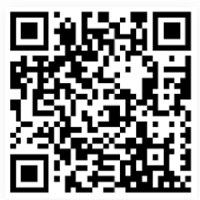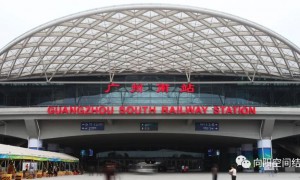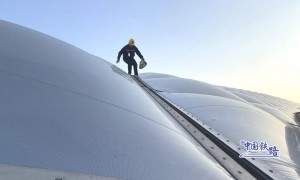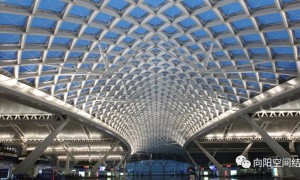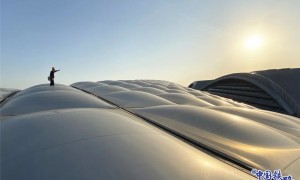美标钢结构设计中,常用的英语术语和名词如下,本来想翻译一下,但又感觉有点班门弄斧了。
钢结构设计中使用的标准名词和术语
ASD(Allowable Strength Design).
Methodof proportioning structural components such that the allowable strength equalsor exceeds the required strength of the component under the action of the ASDload combinations.
ASD LoadCombination.
Loadcombination in the applicable building code intended for allowable strengthdesign (allowable stress design).
AllowableStrength*.
Nominalstrength divided by the safety factor, Rn/Ω.
ApplicableBuilding Code.
Buildingcode under which the structure is designed.
AvailableStrength*.
Designstrength or allowable strength as appropriate.
Bearing.
Ina connection, limit state of shear forces transmitted by the mechanicalfastener to the connection elements.
Bearing(local compressive yielding).
Limitstate of local compressive yielding due to the action of a member bearingagainst another member or surface.
Block shearrupture.
Ina connection, limit state of tension rupture along one path and shear yieldingor shear rupture along another path.
BracedFrame.
Essentiallyvertical truss system that provides resistance to lateral loads and providesstability for the structural system.
Buckling.
Limitstate of sudden change in the geometry of a structure or any of its elementsunder a critical loading condition.
Bucklingstrength.
Nominalstrength for instability limit states.
Cold-FormedSteel Structural Member.
Shapemanufactured by press-braking blanks sheared from sheets, cut lengths of coilsor plates, or by roll forming cold- or hot-rolled coils or sheets; both formingoperations being performed at ambient room temperature, that is, withoutmanifest addition of heat such as would be required for hot forming.
Connection.
Combinationof structural elements and joints used to transmit forces between two or moremembers.
Design Load.
Appliedload determined in accordance with either LRFD load combinations or ASD loadcombinations, whichever is applicable.
DesignStrength*.
Resistancefactor multiplied by the nominal strength, φRn.
Diaphragm.
Roof,floor or other membrane or bracing system that transfers in-plane forces to thelateral force resisting system.
FactoredLoad.
Productof a load factor and the nominal load.
Fatigue.
Limitstate of crack initiation and growth resulting from repeated application oflive loads.
Flexuralbuckling.
Bucklingmode in which a compression member deflects laterally without twist or changein cross-sectional shape.
Flexural-TorsionalBuckling.
Bucklingmode in which a compression member bends and twists simultaneously withoutchange in cross-sectional shape.
Girt.
Horizontalstructural member that supports wall panels and is primarily subjected tobending under horizontal loads, such as wind load.
In-planeinstability.
Limitstate involving buckling in the plane of the frame or the member.
Instability.
Limitstate reached in the loading of a structural component, frame or structure in which a slight disturbance in the loads orgeometry produces large displacements.
Joint.
Areawhere two or more ends, surfaces, or edges are attached. Categorized by type offastener or weld used and the method of force transfer.
Lateral-torsionalbuckling.
Bucklingmode of a flexural member involving deflection out of the plane of bendingoccurring simultaneously with twist about the shear center of thecross-section.
Limit state.
Conditionin which a structure or component becomes unfit for service and is judgedeither to be no longer useful for its intended function (serviceability limitstate) or to have reached its ultimate load-carrying capacity (strength limitstate).
Load.
Forceor other action that results from the weight of building materials, occupantsand their possessions, environmental effects, differential movement, orrestrained dimensional changes.
Load Effect.
Forces,stresses, and deformations produced in a structural component by the appliedloads.
Load Factor.
Factorthat accounts for deviations of the nominal load from the actual load, foruncertainties in the analysis that transforms the load into a load effect, andfor the probability that more than one extreme load will occur simultaneously.
Localbending**.
Limitstate of large deformation of a flange under a concentrated transverse force.
Localyielding**.
Yieldingthat occurs in a local area of an element.
LRFD (Loadand Resistance Factor Design).
Methodof proportioning structural components such that the design strength equals orexceeds the required strength of the component under the action of the LRFDload combinations.
LRFD LoadCombination.
Loadcombination in the applicable building code intended for strength design (Loadand Resistance Factor Design).
MomentFrame.
Framingsystem that provides resistance to lateral loads and provides stability to thestructural system primarily by shear and flexure of the framing members andtheir connections.
Nominalload.
Magnitudeof the load specified by the applicable building code.
NominalStrength*.
Strengthof a structure or component (without the resistance factor or safety factorapplied) to resist the load effects, as determined in accordance with thisSpecification or Standard.
Out-of-planebuckling.
Limitstate of a beam, column or beam-column involving lateral or
lateral-torsionalbuckling.
PermanentLoad. Load in which variations over time are rare or of small magnitude.All other loads are variable loads.
Purlin.
Horizontalstructural member that supports roof deck and is primarily subjected to bendingunder vertical loads such as snow, wind or dead loads.
RationalEngineering Analysis.
Analysisbased on theory that is appropriate for the situation, relevant test data ifavailable, and sound engineering judgment.
RequiredStrength.*
Forces,stresses, and deformations produced in a structural component, determined byeither structural analysis, for the LRFD or ASD load combinations, asappropriate, or as specified by this Specification or Standard.
ResistanceFactor, ?.
Factorthat accounts for unavoidable deviations of the nominal strength from theactual strength and for the manner and consequences of failure.
Rupturestrength*.
Strengthlimited by breaking or tearing of members or connecting elements. Safety Factor,?. Factor that accounts for deviations of the actual strength from the nominalstrength, deviations of the actual load from the nominal load, uncertainties inthe analysis that transforms the load into a load effect, and for the mannerand consequences of failure.
ServiceLoad.
Loadunder which serviceability limit states are evaluated.
Serviceabilitylimit state.
Limitingcondition affecting the ability of a structure to preserve its appearance,maintainability, durability or the comfort of its occupants or function ofmachinery, under normal usage.
Shearbuckling.
Bucklingmode in which a plate element, such as the web of a beam, deforms under pureshear applied in the plane of the plate.
Shear Wall.
Wallthat provides resistance to lateral loads in the plane of the wall and providesstability for the structural system.
Specificationor Standard.
[Editorialnote: This will have to be defined for each specification or standard withlanguage in the scope such as, The “Specification (or Standard) for the designof XXXXX” hereinafter referred to as this Specification (or Standard) shall apply… ]
SpecifiedMinimum Yield Stress.
Lowerlimit of yield stress specified for a material as defined by ASTM.
Strengthlimit state.
Limitingcondition, in which the maximum strength is reached.
StructuralAnalysis.
Determinationof load effects on members and connections based on principles of structuralmechanics.
StructuralComponent.
Member,connector, connecting element or assemblage.
TensileStrength (of material).
Maximumtensile stress that a material is capable of sustaining as defined by ASTM.
Tension andshear rupture.
Ina bolt or other type of mechanical fastener, limit state of rupture due tosimultaneous tension and shear force.
Torsional buckling.
Bucklingmode in which a compression member twists about its shear center axis.
VariableLoad.
Loadnot classified as permanent load.
Webcrippling.
Limitstate of local failure of web plate in the immediate vicinity of a concentratedload or reaction.
Yieldmoment.
Ina member subjected to bending, the moment at which the extreme outer fiberfirst attains the yield stress.
Yield Point.
Firststress in a material at which an increase in strain occurs without an increasein stress as defined by ASTM.
YieldStrength.
Stressat which a material exhibits a specified limiting deviation from theproportionality of stress to strain as defined by ASTM.
YieldStress.
Genericterm to denote either yield point or yield strength, as appropriate for the material.
Yielding.
Limitstate of inelastic deformation that occurs when the yield stress is reached.
Yielding(plastic moment).
Yieldingthroughout the cross section of a member when the bending moment reaches theplastic moment.
Yielding(yield moment).
Yieldingat the extreme fiber on the cross section of a member when the bending momentreaches the yield moment.
Note:
*Theseterms are usually qualified by the type of load effect, for example, nominaltensile strength, available compressive strength, or design flexural strength.
**Terms designated with ** are usually qualified by the type of component, forexample, web local buckling, flange local bending.
